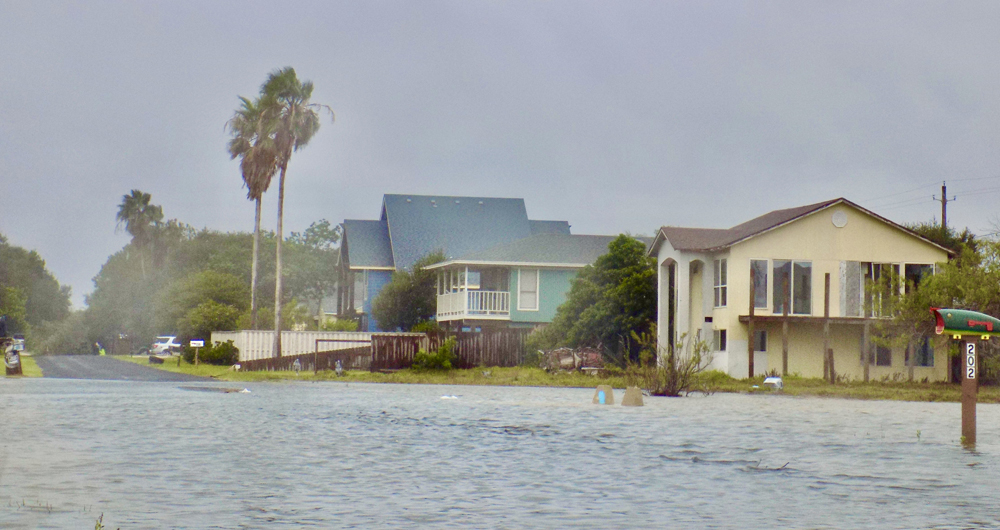While the National Flood Insurance Program still provides more than 90% of residential flood coverage, recent years have seen a growth in carriers offering private flood insurance. Will online flood risk models expand the private market?
A FLOOD OF INFORMATION ON FLOODING
Will online portals simplify or complicate sales of private flood insurance?
By Joseph S. Harrington, CPCU
The third week of September 2020 brought something old and something new in the quest to insure properties in the United States from flood damage. On September 23, the U.S. House of Representatives voted to authorize yet another temporary extension of the National Flood Insurance Program (NFIP), the debt-ridden federal program that has been extended about 20 times in the past 20 years as Congress fruitlessly seeks to put it on a self-sustaining basis.
A day after the House action, CoreLogic, a leading provider of risk information, released an interactive online report entitled “Finding Opportunities in Insuring Flood.” The report essentially allows any user to determine a specific location’s level of exposure for inland flooding or storm surge along the Gulf and Atlantic coasts.
CoreLogic’s initiative came a few months after First Street Foundation, a nonprofit organization, released its “Flood Factor” online application. Flood Factor allows any user to type in an address and learn if the location falls within one of seven flood risk categories: minimal, minor, moderate, major, severe, and extreme. A property’s category depends on its likelihood of being flooded, expressed as one in a certain number of years.
Location-specific
The releases by First Street and CoreLogic are among the most recent initiatives to implement location-specific modelling of flood risk. Flood risk models have grown in scope and sophistication as public officials, geotechnical firms, and private insurers strive to expand the market for private flood insurance and reduce reliance on the NFIP.
The question remains whether the owner of a property at a slightly higher relative elevation will find private flood coverage to be necessary, and whether the owner of a property at a slightly lower elevation will find it affordable.
Recent years have seen growth in the number of carriers offering private flood insurance, as well as in the number of options available to private insurers for adding limited amounts of flood coverage to property policies. Premium growth has been slow, however, and the NFIP still provides more than 90% of the coverage for residential exposures. The take-up rate for NFIP coverage is very low outside of special flood hazard zones, where flood coverage is required by mortgage lenders.
(NOTE: There has been a substantial increase in the amount of private flood premium reported to the National Association of Insurance Commissioners [NAIC] since the NAIC instituted a separate line for reporting private flood premium in 2016. However, most of the total is in commercial lines, and much of the increase resulted from a change in how premium from existing business was reported.)
Online flood risk applications are viewed as a vital tool for helping property owners readily identify their level of exposure to flood loss, relative to other properties. First Street emphasizes consumer empowerment in promoting Flood Factor.
It follows that these applications would help agents and brokers identify prospects for private flood coverage. CoreLogic, like many carriers, emphasizes the marketing potential represented by being able to identify two types of prospects: (1) highly exposed properties outside of standard flood zones that are not insured; and (2) properties within flood zones that are underinsured, given the limits and restrictions of NFIP coverage.
A boon or a bane?
From a purely underwriting perspective, assigning premium on the basis of the best available knowledge of individual risks is regarded as the right way to establish a stable, self-sustaining market for flood coverage. Property owners will either pay their risk-based premium, retain the risk of flood loss, or seek another property.
Under this outlook, the essentially community-based rating at the heart of the NFIP, with its persistent rate subsidies, is a distortion that hampers the development of a private, voluntary market for flood insurance, especially for homeowners.
Promoters of private, voluntary flood insurance are hopeful that today’s easy access to location-specific flood risk assessments can solve the problem of adverse selection in the line. They anticipate that, by distinguishing among flood risks more granularly, more property owners will purchase coverage and improve the spread of risk.
That’s far from guaranteed, however. New flood risk assessment applications could just as easily refine adverse selection as reduce it. Flood is a highly localized peril, where a few inches difference in elevation may make two adjacent properties vastly different in degrees of exposure.
The question remains whether the owner of a property at a slightly higher relative elevation will find private flood coverage to be necessary and whether the owner of a property at a slightly lower elevation will find it affordable. That question now finds itself in the lap of independent agents and brokers.





